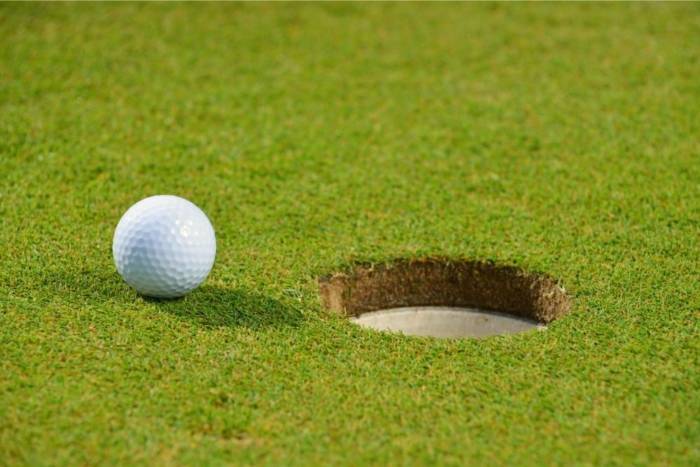What Is An Eagle In Golf?
If you’re a seasoned golfer, you’ll be aware of the complex terminology that is used in the sport, but if you’re a beginner you may find yourself asking what on earth are people talking about! While achievements such as a “hole in one” are pretty self explanatory; others aren’t as easy to figure out.
In this article, we’ll explore what it means to make an “eagle” in golf, where the term comes from, as well the chances you have of making an eagle.

What is an eagle in golf?
In golf, the term “eagle” is used to describe a score of two strokes under par on a single hole.
The par is all you need to figure out how many strokes you’ll need to make an eagle on a specific hole. Each hole on a golf course is given a par, as you may already know. Par is a number that runs from 3 to 5 (in extremely unusual circumstances you may find a par 6).
To score an eagle using the 2-under par rule, you’d need to finish a hole in one of the following ways:
- Score a hole in one on a par-3 – This would be referred to as a hole-in-one (which is much more difficult to achieve) but technically still an eagle
- On a par-4, hole out in two strokes
- On a par-5, hole out in three strokes
Eagles aren’t common occurrences in golf, particularly in the amateur game. So they are something to be treasured and they can have a huge impact on your score.
Where does the term “eagle” come from?
The term “eagle” is related to the origins of the term “birdie.” The two words have an avian connection, as you can see by their names. So, in retrospect, as the birdie phrase was developed, golfers simply followed suit.
Back in the 19th century, people would often use the word “bird” to describe something really cool or impressive. This is where many golf experts believe that the term “birdie” came from. One particular club in New Jersey states that the term was first coined in 1903, and it is still used to describe the very same achievement in golf today.
The term eagle originated as an expansion of the phrase birdie, according to Scottish golf tradition. Because an eagle is such a massive bird, it was established as a way of describing “big birdie.” The eagle was also most likely chosen as it’s the symbolic bird of the United States.
How to score an eagle
Scoring an eagle is a difficult feat that requires excellent golf. Looking at the ways to score an eagle above, you also need a bit of luck too – particularly in the case of scoring a hole in one on a par 3.
Scoring a two on a par 4 can be done in a couple of ways. One you can hole out from distance (usually over 50 yards or more). This means hitting the perfect shot (something that doesn’t happen very often), judging the elements of the wind, slope, distance and spin to perfection, again with a bit of luck!
The second option is to hit drive the green on a shorter par 4 or hit a big drive and chip in. When you’re out on the course you may get a bit of luck with all the elements coming together to give you a chance to get close to a green from the tee. Again, this means hitting a good drive (usually around 300 yards) and following it up with the perfect putt or chip. Both are not easy things to do!

However the “easiest” way (there is no easy way) to score an eagle is on a par 5, by making a three. Most of the time this is done by hitting two big shots from the tee and then the fairway to reach the green under regulation (in two shots rather than three). This will thenn leave you a putt for eagle.
In most cases to pull this off, you need to be a fairly big hitter with some decent consistency and even still you’re probably only going to be able to pull this off on a shorter par 5.
How common are eagles in golf?
In simple terms, eagles are rare in golf, even for the pros. During the 2021 PGA Tour season, PGA Tour players average an eagle every 190 holes. That’s an eagle every 11 rounds. (source: PGAtour.com)
When you take this to the amateur game, the frequency is even less often.
Other golf scoring terms
Golf, like so many other activities, is loaded with jargon that might be baffling to the a beginner. If you’re new to the scene, getting used to the sport’s specialised words, including those linked to scoring, may take some time.
Even if you’re still a newbie, you could appear informed among your friends by learning the right terminology for each score in golf. Below are the most important you should know:
Hole in one – A hole-in-one is undoubtedly the most impressive feat that an ordinary golfer can achieve. The event in which a golfer’s tee shot ends up in the hole is referred to as such. It’s most prevalent on par-3 holes, since the green is usually within striking distance from the tee (starting point). An ace is a phrase that is sometimes used to signify a hole-in-one.
Birdie – When a golfer scores a birdie, it means they finished the hole in 1 under par. For example, a birdie achieved on a par-4 hole will result in a score of 3.
Eagle – As we’ve already outlined above, an eagle refers to when a golfer can complete a hole 2 strokes under par.
Par – The term “par” refers to the amount of strokes that should be taken on a specific hole. The par for every hole is listed on the scoreboard and usually on a sign next to the tee. A regular 18-hole course usually has an overall par between 68 – 72.
Bogey – A bogey occurs when you complete a hole with an overall score of one stroke over par.
Double bogey – A double bogey occurs when you finish two shots over par. There’s also a triple bogey which is three over par, but beyond that golfers usually just use their score and there aren’t any terms for these.